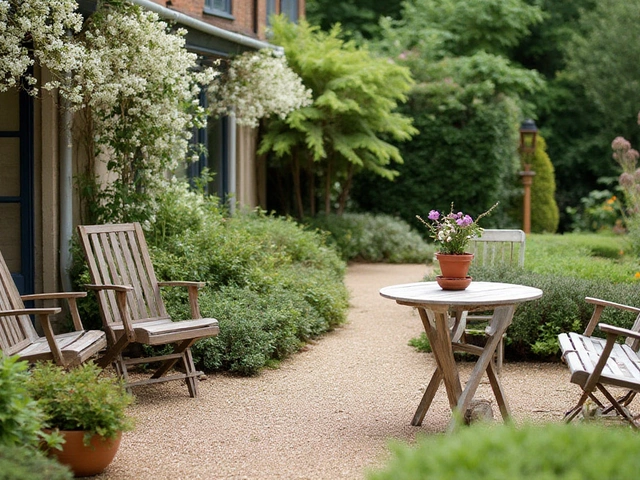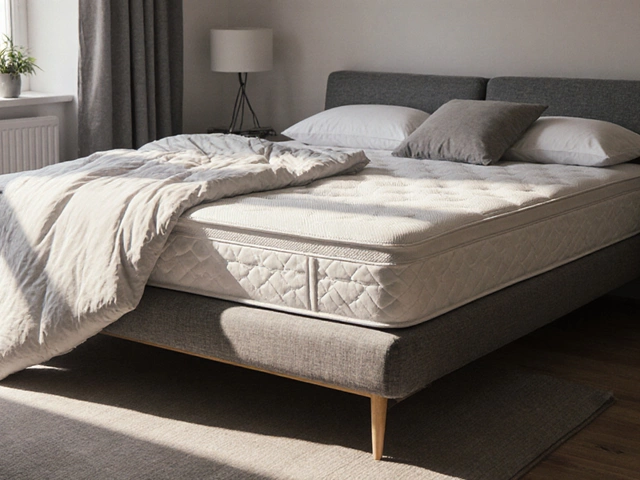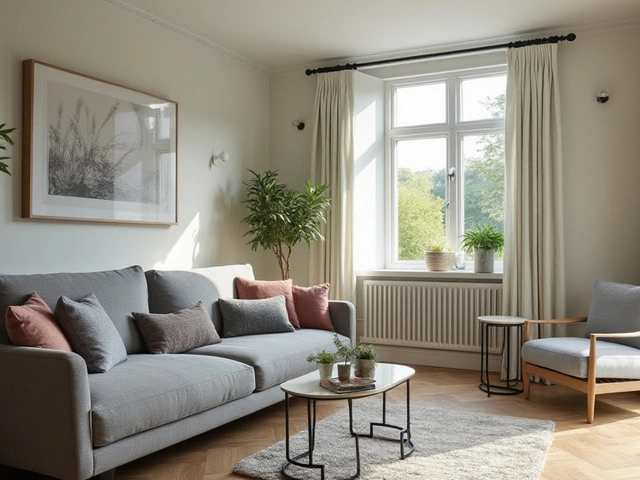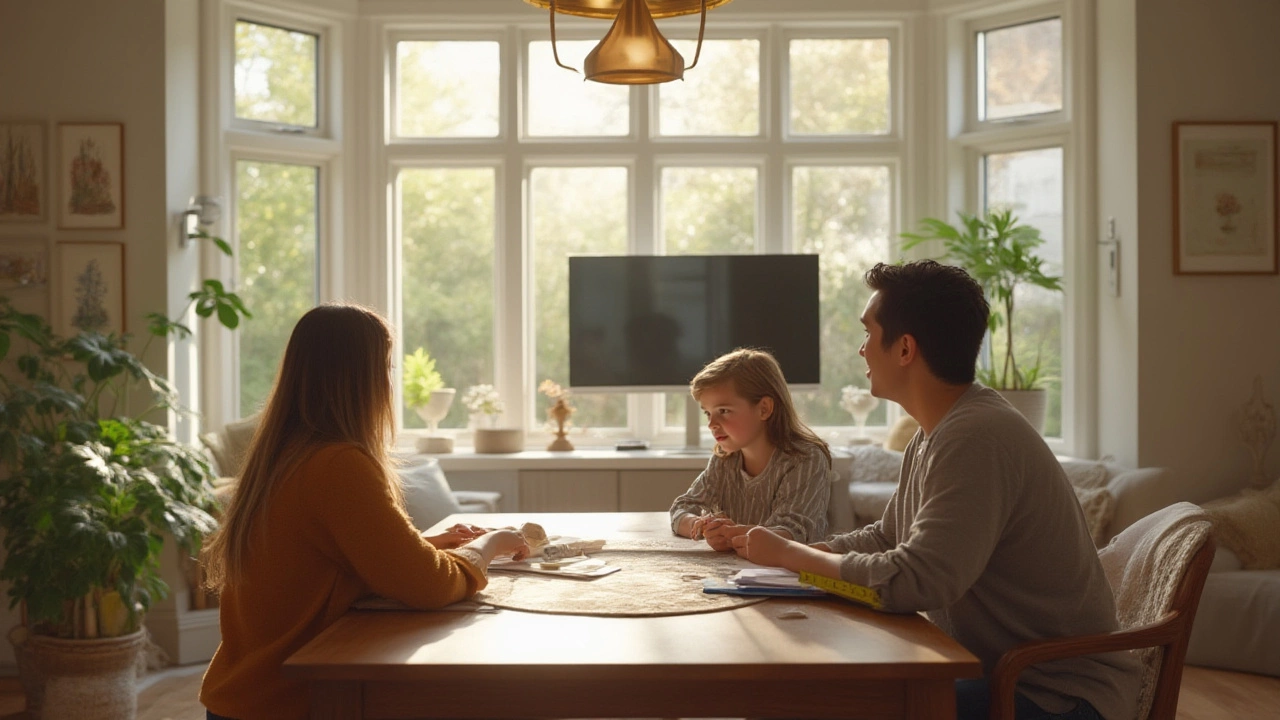 4
Jul,2025
4
Jul,2025
You’ve probably seen someone crank their neck just to watch TV at a friend’s house, or maybe you've squinted from across a dining table, wishing the screen was easier to see. Hanging a TV at the wrong height is one of those things you don’t always notice until it drives you crazy. If you want your living or dining space to feel just right and your TV to disappear into your routine, you need to get the height spot on. It’s not all about looks; it’s about your comfort, the room’s flow, and even protecting your neck from unnecessary strain. Some folks swear by eye-level placement, but when there’s a table involved, the game changes. Ready to dodge the beginner mistakes? Here’s how to nail the ideal height for your TV over a table.
Why TV Height Matters More Than You Think
The truth is, the right height for your TV isn’t just a question of taste. It comes down to ergonomics, viewing angles, and how you use your space. The American Optometric Association recommends keeping the center of your TV screen at your eye level when seated. But throw a table, like a dining or coffee table, into the mix, and you suddenly have to factor in things like line of sight, chair height, and room layout. You want a setup that works whether you’re binging a show solo or having friends over for board games.
Research from Cornell’s Ergonomics Department points out that looking up at a screen for extended periods can strain your neck and shoulders, sometimes leading to muscle tension headaches. Mounting your TV too high can actually make watching feel like a chore rather than downtime. It’s not about just slapping the TV wherever it looks cool—there’s real science behind where your screen should go.
Another thing many people forget is the way light bounces around a room at different heights. Hang your TV too low and it might reflect the glare from your table lamp. Put it too high and you might catch glare from ceiling lights or windows, not to mention the awkward angle for your eyes and neck. If you’ve ever watched a TV above a fireplace and felt like you were watching in the front row of a movie theater, you’ll know exactly what I mean.
Ideally, when seated at your table, the center of the TV should land at your seated eye level. But here’s the catch—not everyone’s eye level is the same, so making a room feel just right means thinking about who’s actually using it. If you have a household full of different heights, splitting the difference or tilting the TV mount downward can help.
One other sneaky factor: the TV size itself. A massive 75-inch screen’s center will sit higher than that of a 43-inch set even if their bottom edges are aligned. That’s why measuring, not guessing, is worth it. The best setups always come from a tape measure, not just eyeballing it.
Finding the Sweet Spot: Calculating the Ideal Height
Alright, let’s get specific. How do you know exactly where to put your TV above the table? Here’s the go-to formula most pros use, and it doesn’t require you to break out any fancy tools. Just a tape measure, a bit of patience, and maybe a helpful friend.
First, figure out your seated eye level. Pull up a chair to your table, sit naturally, and have someone measure from the floor up to your eyes. For most adults, this is between 42 and 48 inches off the floor, but if you have taller bar chairs or a lower coffee table, measure accordingly.
Next, check the height of your table. A standard dining table usually sits around 30 inches high. Coffee tables range from 16 to 18 inches. The space between the table and TV matters; you want enough clearance so the bottom of the screen isn’t blocked when you set an appetizer tray or a tall vase on the table.
Now, consider the height of your TV. Grab the TV’s diagonal size, but more importantly, its vertical measurement—how tall it is from bottom to top. For example, a typical 55-inch TV is about 27 inches tall. Knowing this helps you place the center of the screen at the right visual target.
Here’s the formula to zero in on the ideal height: Take your eye level when seated, subtract half the screen’s height, and that’s where the bottom of your TV should ideally land above the floor. Want a real-world example? If your eye level is 44 inches off the floor and your TV is 27 inches tall, half of that TV is about 13.5 inches. Subtract 13.5 from 44 and your ideal bottom-of-TV height is 30.5 inches above the floor.
But because there’s a table in the way, make sure your TV’s bottom edge isn’t blocked. Always leave at least 6-12 inches between the top of your table and the bottom of your screen, so the view stays clear. This clearance also makes cleaning and decorating easier—nobody wants fingerprints or a jumbled cluster of wires lurking just behind centerpiece flowers.
If you happen to have kids whose heads might pop up in the frame, or if you use the table for work or games, err on the side of a bit more clearance. You’ll avoid the classic mistake of someone accidentally leaning back and blocking half the show.
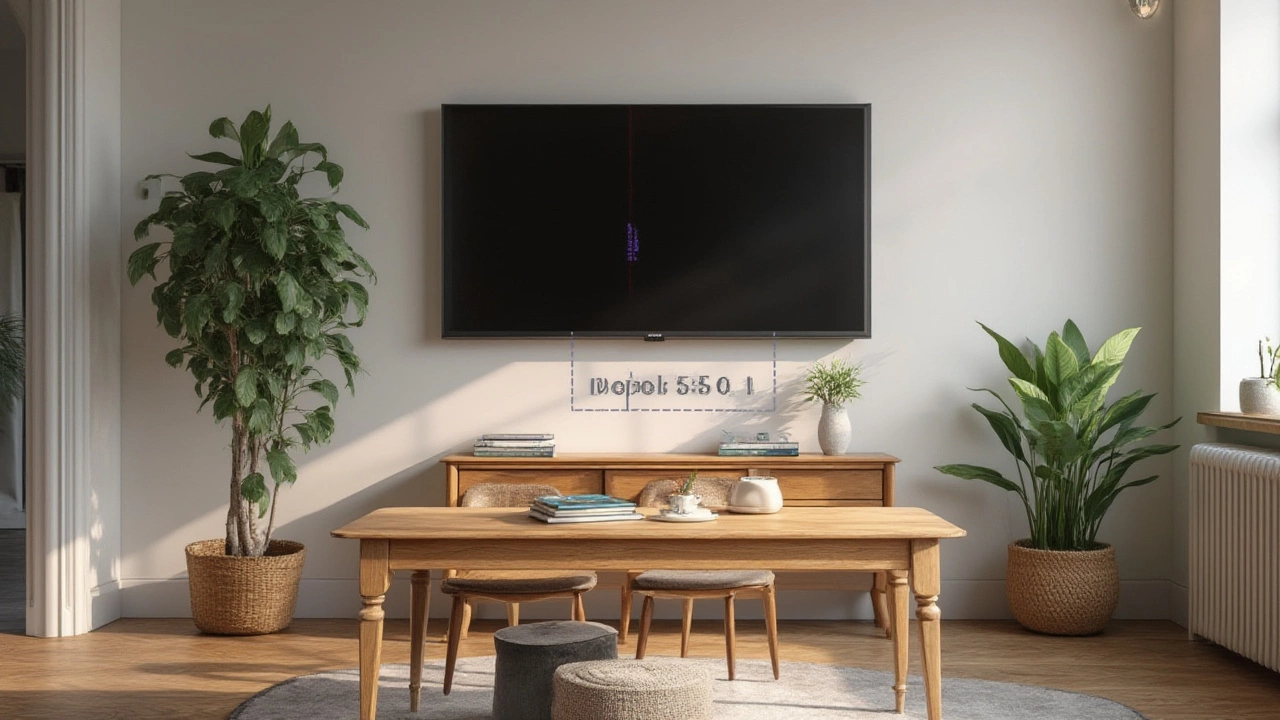
Room Style, TV Size, and Mounts: The Real-World Factors
Let’s talk about aesthetics and practical stuff that comes up once you start actually planning. A TV that looks right in a minimalist loft might look awkward in a cozy farmhouse kitchen. Designers often treat TVs like wall art, aiming for balance with the furniture and the rest of the wall. If your TV dwarfs the table or sits way off to one side, it can throw the vibe way off.
Larger TVs grab more attention and create a bold look, but they also need more wall space above the table. When you go big, you usually want a bit more clearance between the top of your table and the TV. For a 65-inch screen above a sideboard or wide dining table, many installers recommend at least 10-14 inches of space. Not only does this keep things looking balanced, but it also makes serving food or decorating the table easier.
If you’re dealing with a smaller table and TV combo, maybe in a breakfast nook or a bedroom, you might go tighter and drop the TV lower. Play around with painter’s tape and mock up the outline on the wall. Folks with open concept spaces often hang TVs higher, so they’re visible from multiple vantage points—say, the kitchen and living room at the same time.
The type of wall mount you choose makes a huge difference in comfort. There are fixed mounts, tilting mounts, and full-motion arms. A tilting mount lets you hang the TV a bit higher—perhaps to clear a tall table centerpiece—while still aiming the screen down at a comfortable viewing angle. Full-motion mounts mean you can angle the TV for family movie night or morning news over coffee, no matter where you’re sitting.
Decor also matters. If you’re into framing your screen with artwork, shelves, or cabinets, you’ll want to keep those clearances in mind. The same goes for any soundbars or speakers you plan to place below the TV—those need their own space to avoid muffling the sound. Don’t forget about cable management, either. Exposed wires kill the sleek look faster than you can say "remote control." If you want a clean setup, consider wall plates, raceways, or even in-wall cable kits.
Expert Hacks, Common Mistakes, and Final Placement Tips
Let’s wrap it up with some practical shortcuts and “don’t do this” warnings. You’d be surprised how many folks settle for awkward setups due to simple oversights—or just trying to eyeball everything without testing the look.
Start with a mock-up. Before you drill a single hole, cut a piece of cardboard to the size of your TV and tape it up on the wall with painter’s tape. Sit at the table, check the sight lines, and get some feedback from others. If it feels too high or too low, adjust until it feels natural. You’ll save yourself a patched-up wall down the road.
It’s tempting to center the TV with the table, but sometimes lining up with the room makes for a better overall effect, especially if your room isn’t quite symmetrical. Focus on what feels right from the seat where you spend the most time.
One classic rookie mistake: hanging the TV to match artwork, not eye level. Remember, art can go higher—your TV should be comfortable for those long Netflix nights. Also, check all the mounting hardware’s weight rating and wall type. Drywall can only take so much without anchors, and you really do not want your screen crashing down mid-binge.
Here’s a smart extra: add a bias light behind your TV. Research out of the Lighting Research Center in Troy, New York says a subtle backlight reduces eye strain during nighttime viewing by creating gentle contrast behind the screen.
If possible, use a wall stud finder to mount on solid wood or concrete, not just drywall anchors. Cable management deserves another mention—nothing ruins a sweet setup quicker than a messy bundle of cords draping down the wall. Hide them for a truly sleek look.
Finally, there’s no rule saying you can’t tweak things as you go. If you find you’re straining to see the bottom edge because that new centerpiece fruit bowl is in the way, take a deep breath and try shifting it up or down a couple of inches. Smart setups are about your real life, not what Pinterest says.
